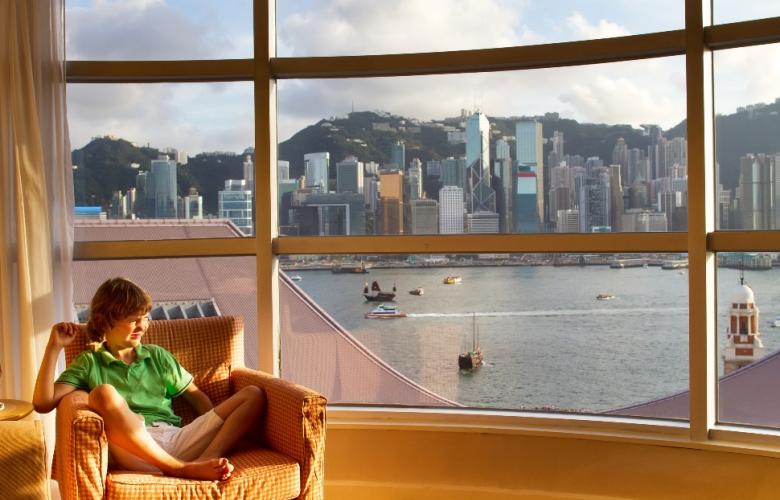Why waterfront addresses are in demand in Asia Pacific?
Contact
Why waterfront addresses are in demand in Asia Pacific?
“As the local economies mature and affluence rises, these waterfront properties become increasingly attractive from a recreational and housing point of view,” explains Dr. Chua Yang Liang, Head of Research, Southeast Asia and Singapore at Jones Lang LaSalle.
It’s Saturday evening in Bangkok and a well-heeled crowd is sipping glasses of bubbly outside a gallery opening in Soi Nana, a revitalized street in the newly trendy Chinatown. A couple of years ago, the city’s beautiful people would have been found in Thonglor, Chidlom, Sathorn or any of the other fashionable downtown areas in the Thai capital.
Today, the focus has shifted squarely to the neighborhoods surrounding the Chao Phraya River, the capital’s ancestral heart and burgeoning new cultural epicenter. With funky eateries, high-design developments like The Jam Factory, stylish condos like The River Bangkok, and a bevy of smart boutique hotels such as The Siam and Sala Rattanakosin, the ancient River of Kings has once again become the place to be in town.
Bangkok’s waterfront may be one of the newest in the region to reach prominence, but it’s far from being the only one. Asia-Pacific is in the midst of an urban waterfront building boom, as developers crowd in to get a piece of coveted coastal areas from Singapore to Sydney.
“As the local economies mature and affluence rises, these waterfront properties become increasingly attractive from a recreational and housing point of view,” explains Dr. Chua Yang Liang, Head of Research, Southeast Asia and Singapore at Jones Lang LaSalle. “They offer something uniquely different from the typical inland development.”
In Sydney, for example, foreign investors are scrambling to snap up existing hotel properties in Darling Harbour while at the same time new projects like the A$10 million Harbour Royale Developments are being built. Meanwhile in Manila, the massive Bay City Reclamation Project is set to reshape the capital.
New development for a new time
“From an urban perspective, coastal development has traditionally been dominated by commerce such as trading, shipping and transportation,” says Dr. Chua. In developed modern metropolises where green space is at a premium, however, a river or harbor view creates a sense of openness and a connection to the natural world that is a big selling point for today’s developers behind the high-rise hotels and apartment blocks. . “Both end-users and investors are typically fond of waterfront locations with their expansive views and resort-like lifestyle,” Dr Chua adds.
A few cities have been able to cultivate that waterfront atmosphere through careful planning. For example, thanks to Singapore’s Urban Redevelopment Authority (URA), the Lion City enjoys a 3.5-kilometer promenade partially shielded from the tropical sun by three breeze-shelters equipped with motion-sensitive fans. Since opening in 2010, the waterfront around Marina Bay Sands has become one of the region’s biggest development success stories.
Fighting logistical hurdles
Not every project has been as successful as Singapore’s. In Thailand, for instance, Dr. Chua points out that, “the access to the riverfront is quite weak. The building regulations are also among the most stringent along the riverfront, making such developments very challenging.”
These difficulties go a long way to explaining why the river lagged behind the rest of the city for so long. With the help of Bangkok River Partners, things are changing, but it’s a process that takes time. Dr. Chua is optimistic about the future: “Current government plans to provide public access such as walking paths and cycle-ways along both sides of the river, when implemented with cooperation from the private sector, could have immense social, economic and environmental benefits.”
Over in Hong Kong, harbor-front properties have been in-demand for decades, but implementing the kind of large-scale change seen in Singapore is proving tricky. Plenty of bold suggestions for pedestrian walkways and manmade beaches along Victoria Harbour have been made, but with large sections of waterfront closed off to the public, making these visions a reality is no small task. An HK$12 billion potential redevelopment project in the pipeline could be a game-changer for the SAR (Special Administrative Region), however, and despite some criticism, seems poised to move forward.
While demand for the waterfront lifestyle may be rising, supply is limited. “There is only so much waterfront a city or country has to offer,” says Dr. Chua. However, developers will ultimately follow where end-user demand goes.” As infrastructure improves and ambitious new projects cluster onto shorelines, the skyline of Asia’s big city waterfront looks set for further change in the coming years.
This article was first published on www.jllrealviews.com










